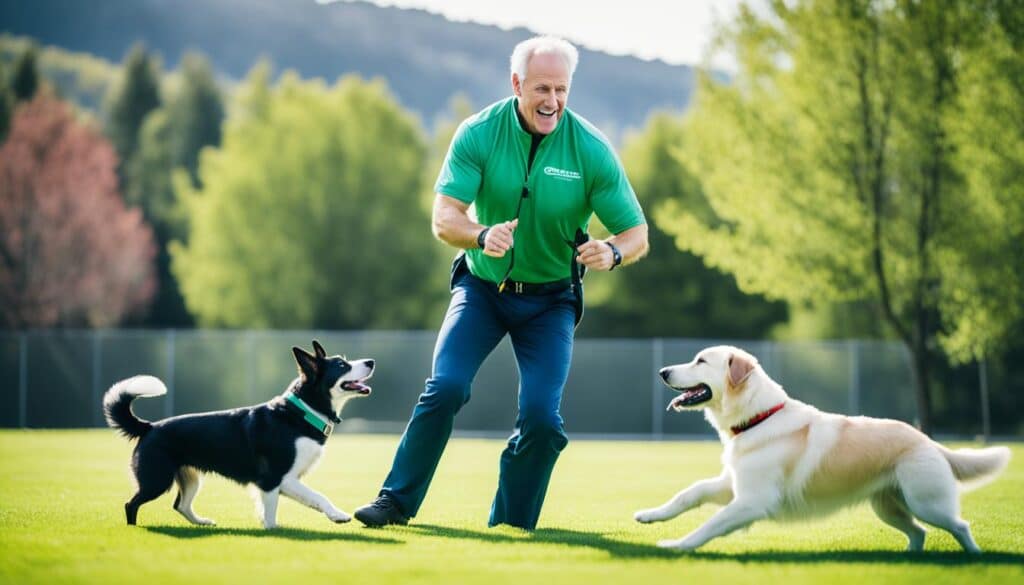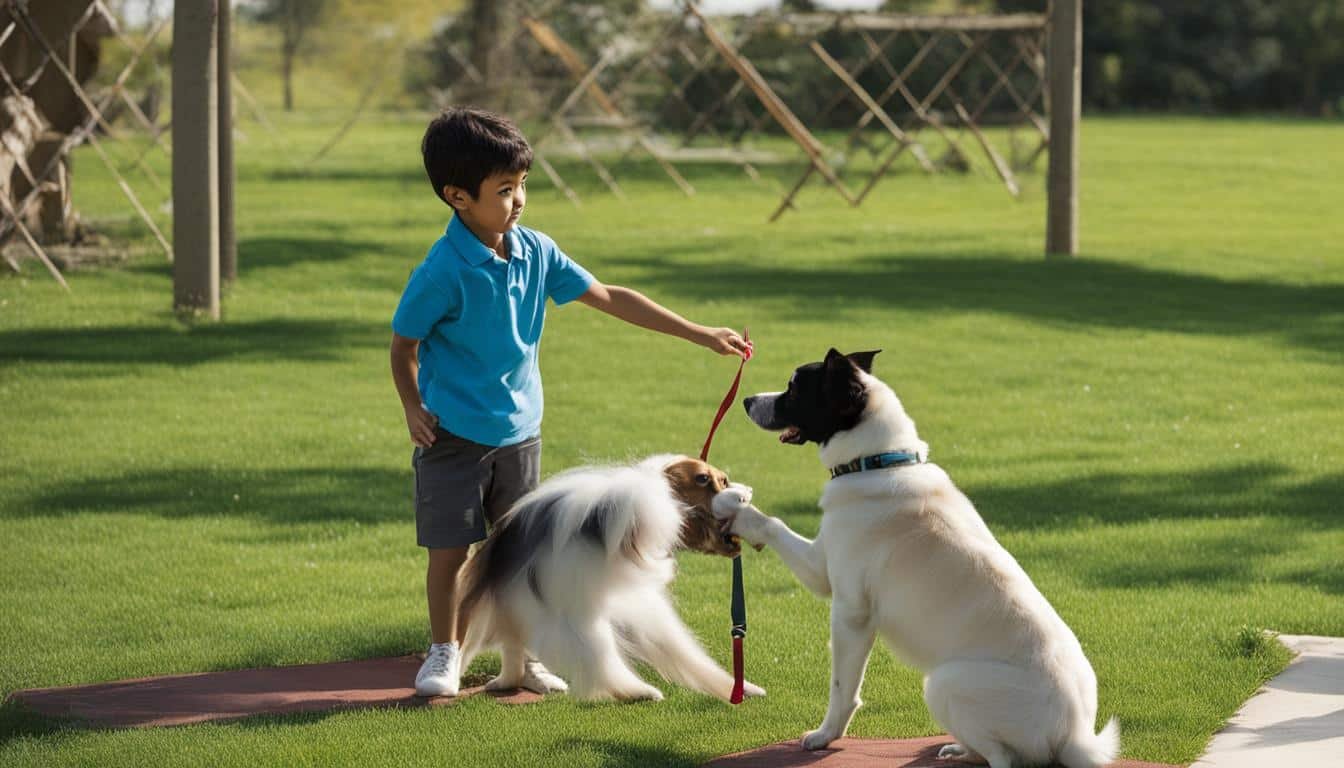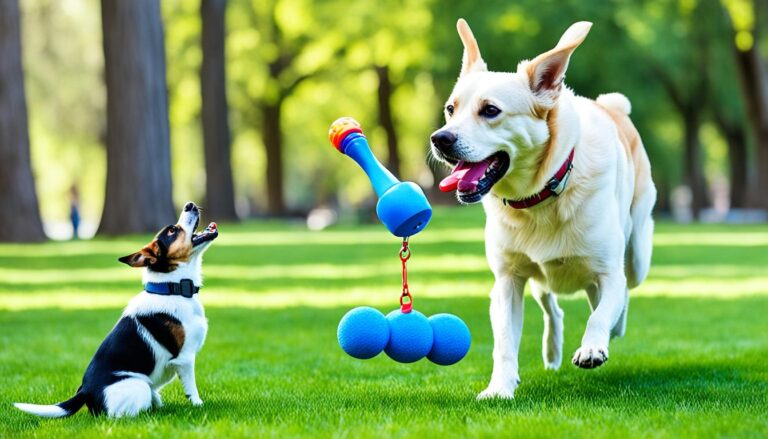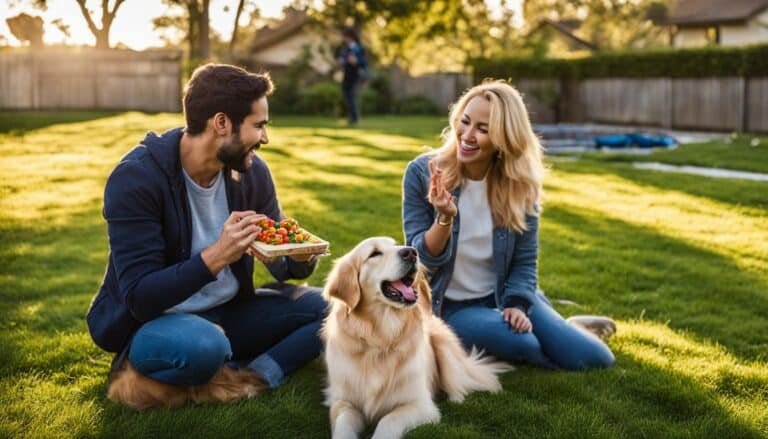How Are Dogs Trained
Welcome to the world of dog training, where you can unlock the full potential of your furry companion and build a strong bond that will last a lifetime. But before we dive into the world of training techniques and tips, let me share a relatable story that sets the stage for our journey.
Meet Sarah, a dog lover and proud owner of a lively Labrador named Max. Sarah had always dreamed of having a well-behaved and obedient dog, but she soon realized that training Max was not as easy as she expected. Max would often pull on the leash during walks, bark excessively, and simply ignore her commands.
Determined to help Max become the best version of himself, Sarah set out to learn more about dog training techniques. She discovered that understanding how dogs learn and finding out what motivates them are essential keys to successful training.
With her newfound knowledge, Sarah implemented positive reinforcement techniques, rewarding Max with treats and praise whenever he displayed desired behaviors. Max quickly learned that good behavior led to tasty rewards, and he became more eager to please Sarah during their training sessions.
As Sarah continued to train Max, her furry friend’s behavior started to transform. He became calmer on walks, paid attention to Sarah’s commands, and even learned some impressive tricks. The bond between Sarah and Max grew stronger with each successful training session, making their relationship even more fulfilling.
Now, let’s dive deeper into the world of dog training and explore the benefits, different training approaches, and effective techniques that can turn your dog into a well-mannered and obedient companion.
The Benefits of Training Your Dog
Training your dog goes beyond teaching them basic commands; it also provides them with mental stimulation and prevents boredom. Basic obedience training, such as sit, stay, and come, allows your dog to have the freedom to enjoy activities like off-leash walks and socializing with friends while still being under control.
Dogs are intelligent animals and enjoy learning, so training can be a fun and rewarding experience for both of you. Positive reinforcement training, where you reward your dog with treats, toys, or praise, encourages them to repeat desired behaviors. This method not only strengthens the bond between you and your dog but also fosters a positive and cooperative relationship.
- Improved obedience: Training your dog allows them to understand and follow commands, ensuring their safety and your peace of mind.
- Enhanced socialization: Well-trained dogs are more likely to behave appropriately around people and other animals, making outings and social interactions more enjoyable.
- Mental stimulation: Training exercises your dog’s brain and prevents boredom, reducing the likelihood of destructive behaviors.
- Building trust and communication: Positive reinforcement training strengthens the bond between you and your dog, fostering a trusting and cooperative relationship.
- Increased confidence: Training boosts your dog’s self-confidence as they master new skills and challenges.
Whether you’re teaching your dog basic obedience commands or working on advanced tricks, training provides numerous benefits that extend beyond basic obedience. It allows you to create a harmonious and fulfilling relationship with your furry companion, ensuring a happier and well-adjusted dog.
How Dogs Learn
Dogs are motivated by rewards, making reward-based training the most effective method. By providing your dog with something they really desire, such as food or toys, when they display a specific behavior, you increase the likelihood of them repeating that behavior.
It is crucial to identify what motivates your dog and what their favorite treats or toys are. Small pieces of meat or cheese are often popular choices. The better the reward, the more your dog will enjoy training and be eager to learn. Understanding your dog’s preferences will make the training process more enjoyable and successful.

Top Training Tips
When it comes to dog training, there are several tips that can help make the process smoother and more effective. Follow these dog training tips to ensure success:
- Minimize Distractions: Start training sessions in a quiet room away from any disturbances. This is particularly important when introducing new commands or tricks. By minimizing distractions, you can ensure that your dog can focus on learning and following your instructions.
- Break It Down: Divide training into short, regular sessions instead of long, intense sessions. This prevents your dog from feeling overwhelmed and helps maintain their focus. Remember, dogs learn at different rates, so be patient and give them time to grasp and master each skill.
- Reinforce Known Behaviors: Always end each training session on a positive note by reinforcing a behavior your dog already knows. This boosts their confidence and reminds them of their progress. Positive reinforcement, such as treats, praise, or playtime, helps motivate your dog to continue learning and cooperating.
By implementing these training tips, you can create a productive and enjoyable training experience for both you and your furry friend. So, get started with training and have fun bonding with your dog!

Getting Started with Dog Training
Now that you have a basic understanding of the basics of dog training, it’s time to take the next step and enroll in dog training classes. While guides can provide you with valuable information, nothing beats the hands-on experience and guidance of professional trainers.
By joining dog training classes, you and your furry friend can learn together in a structured and supportive environment. Professional trainers will guide you through various training techniques and help you navigate the challenges that may arise along the way.
One of the benefits of attending dog training classes is the opportunity to receive personalized advice and assistance tailored to your dog’s specific needs. Qualified behaviorists and dog training instructors can offer expert guidance to address any difficulties you may encounter during the training process.
Whether you are teaching your dog basic commands or addressing specific behavioral issues, getting professional guidance through dog training classes can greatly enhance your training journey. With their expertise and experience, trainers can provide valuable insights and ensure that you and your dog are on the right track.
So, why wait? Sign up for dog training classes and embark on this exciting journey towards a well-trained and obedient dog.
Different Training Approaches
When it comes to dog training, there are different approaches you can take to shape your furry friend’s behavior. The two common methods are aversive-based training and reward-based training.
Aversive-based training uses positive punishment and negative reinforcement techniques to discourage unwanted behaviors. This may involve loud noises or physical corrections to deter your dog from engaging in undesirable actions.
On the other hand, reward-based training focuses on positive reinforcement to encourage desired behaviors. By rewarding your dog with treats, toys, or praise when they perform correctly, you create a positive association and motivate them to repeat those behaviors in the future.
Experts generally recommend reward-based training due to its effectiveness and the positive relationship it fosters between you and your dog. This approach avoids instilling fear and focuses on building trust and cooperation.
To effectively train your dog using rewards, it’s important to reinforce the behaviors you want and avoid rewarding unwanted actions. This consistency helps your dog understand what is expected of them, and they will be more likely to engage in behaviors that lead to rewards.
Using Markers and Clicker Training
Markers and clicker training are effective tools in dog training. A marker is a cue that lets the dog know they have performed correctly and will receive a reward soon.
Classical conditioning is used to associate the marker signal, often a whistle blast, with a reward. Clicker training, popularized by Karen Pryor, involves using a metal clicker as a marker to shape behaviors. When the dog performs the desired behavior correctly, the click signifies their success and that they will be rewarded.
Consistency in using markers and clicker training can reinforce behaviors and improve communication between you and your dog during training sessions.
- Markers provide clear communication to your dog
- Clicker training uses a distinctive sound to mark correct behaviors
- Both methods create a strong association between the marker and a reward
- Markers and clicker training reinforce positive behaviors
- Consistency is key in using markers and clicker training effectively
By incorporating markers or clicker training into your dog training routine, you can enhance the learning process and efficiently shape desired behaviors.
Training Tips for Success
To ensure success in training your dog, it is important to keep a few tips in mind. First, keep training sessions short, limited to 15 minutes, to maintain your dog’s attention and prevent boredom. Dogs have shorter attention spans, so shorter sessions are more effective.
Next, focus on one behavior or task at a time to avoid confusion. Trying to teach multiple commands simultaneously can overwhelm your dog and hinder their progress. By focusing on one behavior, you can give your dog clear and consistent instructions, increasing their understanding.
Using consistent commands for desired behaviors also plays a crucial role in effective training. Whether it’s “sit,” “come,” or “stay,” using the same command consistently helps your dog associate the word with the desired action. This clarity will enhance their learning process and reinforce the behaviors you want to see.
The American Kennel Club recognizes five basic commands that every dog should know: come, heel, sit, stay, and down. These commands form the foundation of obedience training and enable you to have better control over your dog’s behavior in various situations.
Remember, successful dog training requires patience and consistency. Dogs learn at different rates, so be patient with your furry friend’s progress. Consistency in your training efforts, coupled with positive reinforcement, will go a long way in helping your dog become well-trained and obedient.






